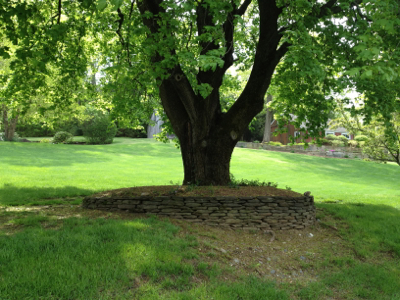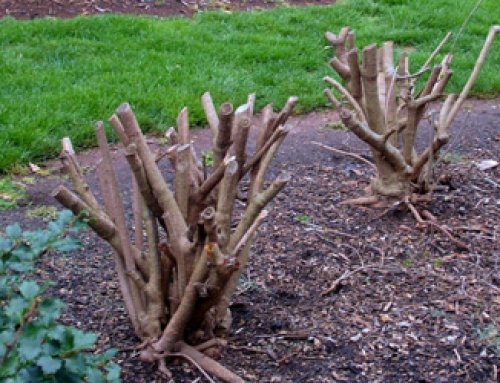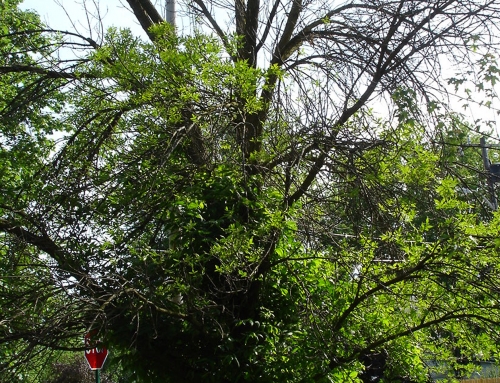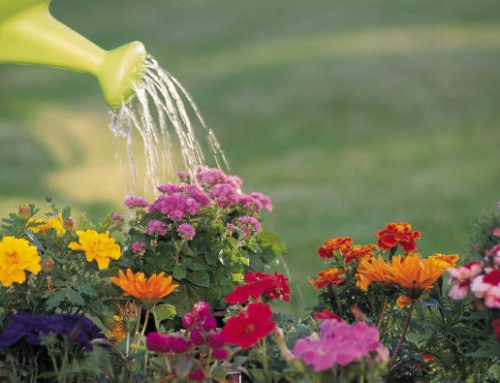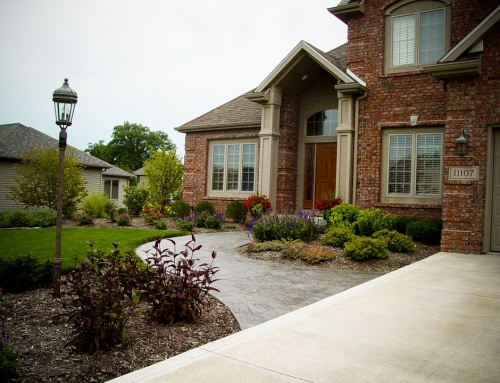If you don’t want to doom a favorite tree, there’s one popular landscape feature you really should avoid: a raised bed built all around and partway up the trunk of that tree. It matters not what you plant in such a bed – flowers, ferns, shrubs or nothing at all. The effect will be the same: moist, airless soil against the trunk will rot the bark, which will invite insects and then rodents, which will further damage the bark, and soon the tree will be completely girdled so nutrients can no longer get drawn up to the twigs and leaves. And that’s it: the end of your tree.
The tree won’t expire right away, because just as trees grow slowly, they also (usually) die slowly. And the damage will be invisible, hidden below the soil that’s been heaped up around the trunk. So maybe you won’t know that your pretty bed is the reason for your handsome tree’s decline. But still, the fact remains.
You can see examples of this fatal mistake in front yards across the country. Why do so many people do it? Probably because of that old familiar story: one person does a new thing, and maybe this person has some sort of status or visibility, and then other people copy the thing, or “professionals” recommend it, and gradually more and more people come to think it is a good idea. Remember Mohawk haircuts? Pet rocks? Sack dresses? Well, those trends were just silly and didn’t hurt anyone. But this one is really destructive. It has to stop.
Possible reasons for this mistake
Now please understand, I do realize that a common justification for these raised beds is to keep careless mowers and trimmers from harming the tree bark. Well… this “solution” is probably even worse than the problem it is supposed to prevent, because in raised beds the damage surrounds the trunk entirely, whereas mower damage is concentrated in one or two survivable wounds (survivable unless they happen again and again, in which case the solution really should be to remove the operator of the equipment.)
I also sympathize with the impulse to create tidiness in our landscapes. A nice edge to trim against: this can be very appealing. I get it. But there has to be some other way to achieve the desired tidiness effect without accidentally killing the very tree that is being celebrated.
And finally, I appreciate that sometimes, when you’re looking for a place to add some flowers in the yard, using the tree as a centerpiece in a bed that’s elevated for better visibility might seem like a good idea. But it is not. As with everything in landscape design, the right solution must include considerations beyond just how something will look.
What to do instead
If you have a tree standing alone in your yard, here are some alternatives to the deadly raised bed:
- Mulch the ground around the trunk, but only on the level where the tree emerges from the ground.
- Make this area of mulch as big as possible, ideally at least out the edge of the branch canopy.
- For mulch, use the leaves from the tree itself (composted, chopped, or ideally just left where there they fall).
- Be sure to leave the trunk “flare” exposed, un-covered by either soil, mulch or any material that will hold moisture against the bark.
- If you still want a solid boundary to trim against, you can install around the perimeter of the mulch some sort of low edging.
Even better would be to have a group or grove of trees growing together in one large swath of rich soil that remains nearly always untouched and un-gardened. In this soil will gradually thrive microbes, fungi and other invisible creatures that help keep trees vital and healthy. (If a lot of unwanted plants show up here too, then you might need to intervene, but try to use a light touch and work with nature’s processes rather than engaging in constant battle.)
Do you still want to have a raised bed full of pretty flowers? I recommend that you build it somewhere other than around a beautiful, mature tree. Or else, if you must put the bed in just that spot and no other, you might as well cut down the tree at the start and save yourself the trouble later.
—-Written by Sue Reed

